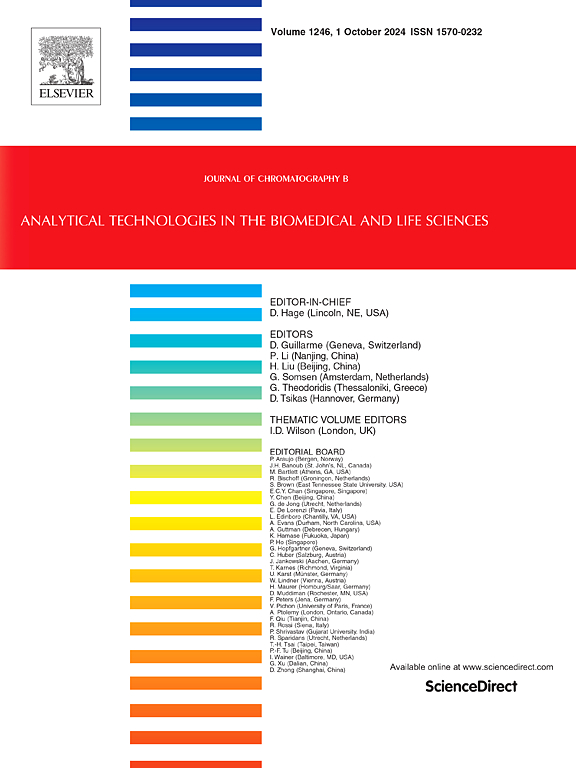Development of an analytical method for the analysis of diflubenzuron in whole blood, plasma, and serum using liquid chromatography tandem mass spectrometry
IF 2.8
3区 医学
Q2 BIOCHEMICAL RESEARCH METHODS
引用次数: 0
Abstract
The integration of free-range beef livestock into the human food chain has been continuously threatened by outbreaks of babesiosis, which is propagated by ticks that vector the protozoans that cause the disease. The protozoans are spread among livestock by certain species of ticks, known collectively as cattle fever ticks (CFT). Although eliminated from the US in the 1940s, CFT continue to infiltrate the US by crossing the US/Mexico border on stray livestock and wildlife, and infest cattle herds. Orally administered acaricides are part of the strategy to control CFT. Parallel dosing studies, utilizing oral administration of the benzoylphenyl urea (BPU) compound diflubenzuron (DFB), were conducted in cattle and white tailed deer (WTD). We developed and validated a sensitive (<1 ppb) liquid chromatography/ tandem mass spectrometry (LC-MS/MS) method for DFB quantification in toxicology specimens. In fit-for-purpose testing, the method demonstrated accuracies within ±9 % of QC targets, and coefficient of variation percentages (%CV) of 14.8 % for whole blood, 9.0 % for plasma, and 8.7 % for serum. This work outlines the extraction and instrumental method for DFB analysis in these matrices. LC-MS/MS had not previously been used to detect and quantify DFB in whole blood, plasma, or serum. This is also the first method to employ carbon-13 labeled DFB (13C6) as an internal standard for measuring DFB in blood matrices from bovine dosing studies.
求助全文
约1分钟内获得全文
求助全文
来源期刊

Journal of Chromatography B
医学-分析化学
CiteScore
5.60
自引率
3.30%
发文量
306
审稿时长
44 days
期刊介绍:
The Journal of Chromatography B publishes papers on developments in separation science relevant to biology and biomedical research including both fundamental advances and applications. Analytical techniques which may be considered include the various facets of chromatography, electrophoresis and related methods, affinity and immunoaffinity-based methodologies, hyphenated and other multi-dimensional techniques, and microanalytical approaches. The journal also considers articles reporting developments in sample preparation, detection techniques including mass spectrometry, and data handling and analysis.
Developments related to preparative separations for the isolation and purification of components of biological systems may be published, including chromatographic and electrophoretic methods, affinity separations, field flow fractionation and other preparative approaches.
Applications to the analysis of biological systems and samples will be considered when the analytical science contains a significant element of novelty, e.g. a new approach to the separation of a compound, novel combination of analytical techniques, or significantly improved analytical performance.
 求助内容:
求助内容: 应助结果提醒方式:
应助结果提醒方式:


